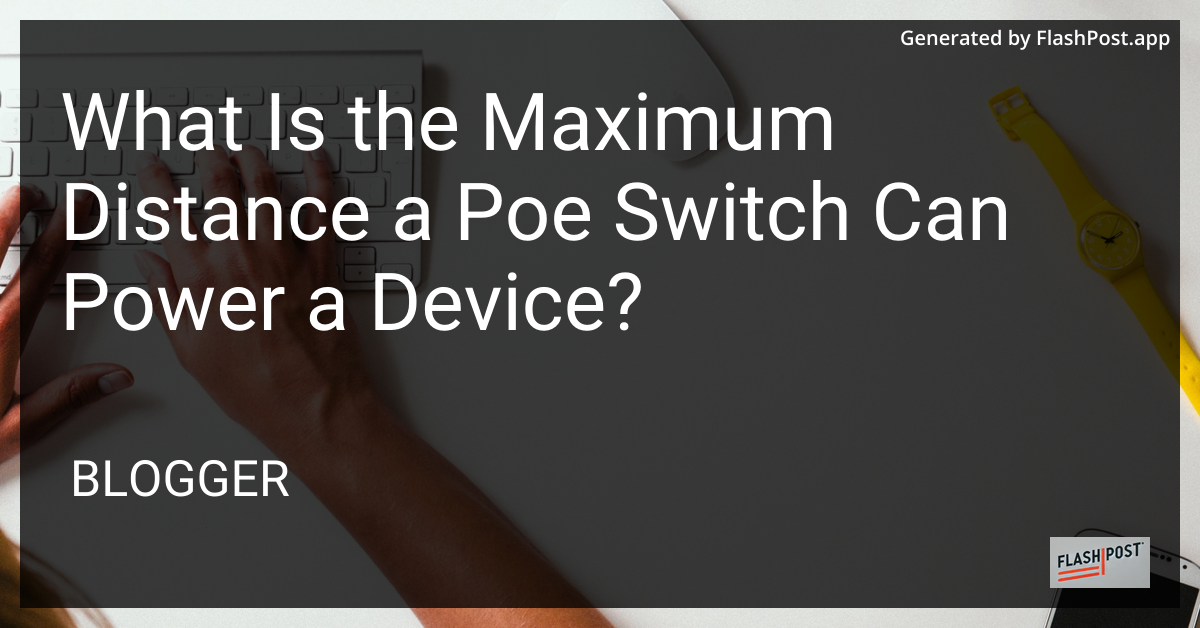What Is the Maximum Distance a Poe Switch Can Power a Device?

What is the Maximum Distance a PoE Switch Can Power a Device?
Power over Ethernet (PoE) technology is increasingly becoming popular due to its efficiency in delivering both power and data over a single Ethernet cable. This capability simplifies network installation and reduces costs. However, questions often arise regarding the maximum distance a PoE switch can effectively power a device. Understanding these limitations is crucial for optimizing network performance and ensuring devices are adequately powered.
Standard PoE Distance Limitations
Typically, the maximum distance a PoE switch can power a device is governed by the standards set by IEEE. The most widely adopted standards are IEEE 802.3af, IEEE 802.3at, and IEEE 802.3bt, each offering different power levels:
- IEEE 802.3af: Also known as PoE, delivers up to 15.4 watts per port, with a maximum supported cable length of 100 meters (328 feet).
- IEEE 802.3at: Known as PoE+, offers up to 30 watts per port, also with a 100-meter maximum cable length.
- IEEE 802.3bt: Referred to as PoE++, supplies up to 60 watts or 100 watts (Type 3 and Type 4, respectively) per port, maintaining the 100-meter limitation.
The 100-meter distance limit includes both the length of the Ethernet cable and any patch cables that may be in place. Beyond this, power transmission drops significantly due to resistance and power loss.
Overcoming Distance Limitations
Efforts to exceed the typical 100-meter constraint involve the use of various network devices and techniques. Here are several methods to enhance PoE deployment over greater distances:
PoE Extenders: Designed specifically for this purpose, PoE extenders can increase the distance by an additional 100 meters per unit, depending on the model. They can be daisy-chained to push data and power across longer spans.
Fiber Optic Cables: While PoE itself isn’t transmitted over fiber, deploying fiber optics for data transmission, alongside local power sources, allows for much greater distances while minimizing signal degradation.
Network Switches: Intermediate network switches can be employed to refresh both power and data transmission, maintaining robust connectivity across lengthy networks.
Considerations for Long-Distance PoE Installations
When planning a PoE network setup that surpasses the standard distance, several critical factors need consideration:
Cable Quality: Superior quality Cat5e, Cat6, or Cat6a cabling is recommended to reduce resistance and optimize power delivery over long distances.
Device Power Requirements: Ensure that connected devices are within the power delivery capability of the PoE source, taking into account any power loss along the cable.
Environmental Conditions: External variables like temperature and humidity can affect cable performance, especially in outdoor or industrial installations.
Conclusion
In a networking environment, comprehending the limits and potential of PoE technology is paramount. While standard PoE switches capably power devices at a distance of 100 meters, extended distances can be achieved through strategic planning and the implementation of supplementary devices like PoE extenders and network switches. This ensures the seamless operation of a wide array of PoE-powered devices across expansive networks. For related topics, consider exploring removing hashtag in Vue router URL and the importance of Vue router, or delve into the world of wireless internet routers for optimized connectivity.
”`
This article includes technical specifications relating to PoE technology, suggestions for extending the effective distance, and relevant links to other networking and technology articles.
Comments
Post a Comment